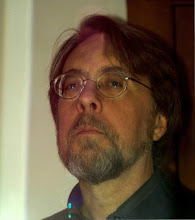The last two movements of Sibelius' Symphony No. 2 in D. The magnificent finale begins at 5:50.
Last night Nat and I heard the Madison Symphony Orchestra play this work.
I guess that it's a testimony to the power and vivdness of this music that people have often felt a strong need to look for some extra-musical meaning for it. According to Michael Allsen's excellent notes for the MSO concerts, there is a long-standing story that Sibelius did confide a "program" for the symphony to a friend of his: "a vaguely defined set of impressions of Finnish culture and politics." Politics!? I find that it gives me images of far northern landscapes: magnificent wastelands of forest, rock, and ice. The anthem-like themes of the finale seem to cry out for words. The brass choir seems to be signing the praise of something or someone. But whom? What? Each listener must supply his or her own sacred object.
As Ayn Rand said in a very interesting if quirky essay, "Art and Cognition":

Music cannot tell a story, it cannot deal with concretes, it cannot convey a specific existential phenomenon, such as a peaceful countryside or a stormy sea. The theme of a composition entitled “Spring Song” is not spring, but the emotions which spring evoked in the composer. Even concepts which, intellectually, belong to a complex level of abstraction, such as “peace,” “revolution,” “religion,” are too specific, too concrete to be expressed in music. All that music can do with such themes is convey the emotions of serenity, or defiance, or exaltation. Liszt’s “St. Francis Walking on the Waters” was inspired by a specific legend, but what it conveys is a passionately dedicated struggle and triumph—by whom and in the name of what, is for each individual listener to supply.

2 comments:
I agree with you. I was thinking much the same thing last night while watching "Once Upon a Time in the West." The same two or three songs are used throughout the picture, and every time one is used in a sufficiently different context, it elicits a different set of emotions than before.
Oh, and harmonicas and whistling are both awesome.
Your comments on this symphony are insightful. I too have had similar thoughts about it - and find the finale, as you put it, both magnificent and full of song-like praise. It is the inspiration of music like this that seems closest to the sacred for man.
Post a Comment